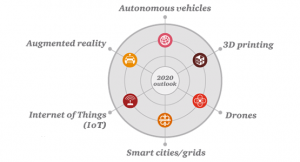 Traditionally, capital projects & infrastructure have been seen as predictable, engineering-driven, often labour-intensive – and not at the cutting-edge of technology. But the reality is changing, and fast. A wide array of disruptive, breakthrough technologies are rapidly transforming the way infrastructure is built and operated, reshaping the way the infrastructure industry operates, and bringing major implications for every participant in the value chain. PwC’s CP&I team is at the forefront of investigating, identifying and seizing the infrastructure opportunities that these new technologies open up – and here are six that our experience and insights show are having the greatest impacts.
Traditionally, capital projects & infrastructure have been seen as predictable, engineering-driven, often labour-intensive – and not at the cutting-edge of technology. But the reality is changing, and fast. A wide array of disruptive, breakthrough technologies are rapidly transforming the way infrastructure is built and operated, reshaping the way the infrastructure industry operates, and bringing major implications for every participant in the value chain. PwC’s CP&I team is at the forefront of investigating, identifying and seizing the infrastructure opportunities that these new technologies open up – and here are six that our experience and insights show are having the greatest impacts.

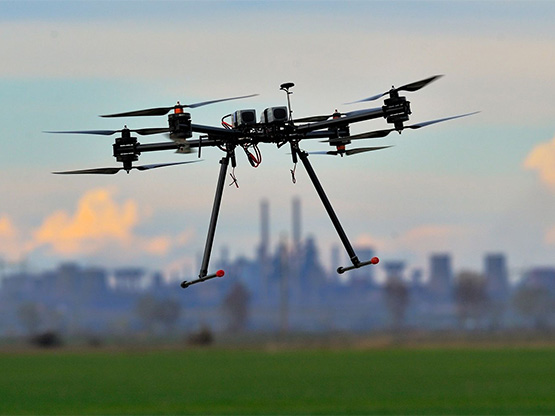
Drones
A recent PwC report – Clarity from above – puts the global market for drone-powered solutions at over US$127bn, with capital projects & infrastructure accounting for the largest proportion claimed by any industry at US$45.2bn.
This heavy investment reflects the growing use of drone technology across the world in activities such as supervising ongoing capital investment programmes, monitoring the progress of projects, managing maintenance of existing infrastructure (often combined with 3D printing), handling tasks in hazardous areas and conducting asset inventories.
Given this growing range of applications, infrastructure planning and strategy should now anticipate expanding usage of drone technology in the future. In 2016 PwC established a global centre of excellence in Poland dedicated to drone applications – and recent projects it’s been involved in include helping a client use drones and image data analytics to monitor the reconstruction of a bridge on a high-speed track.
3D printing
PwC research shows that 3D printing technology – also known as “additive manufacturing” – is now used by the majority of industrial manufacturers in developed markets such as the US. And its application in infrastructure is now increasing apace, with uses ranging from the construction of 3D-printed buildings in China and the Netherlands to the printing of replacement parts on-site to maintain power infrastructure more quickly and efficiently. PwC analysis shows that 3D printing could potentially save significant costs in bringing construction projects to market through shorter project times and fewer wasted resources, as well as boosting efficiency for labour-intensive trades like builders, electricians and plumbers. The technology also promises dramatic reductions in shipping costs, bringing big implications for ports and transportation infrastructure. With reduced waste during construction and the ability to melt down and recycle infrastructure, 3D-printing is ultimately set to transform how cities worldwide are planned, built and sustained.
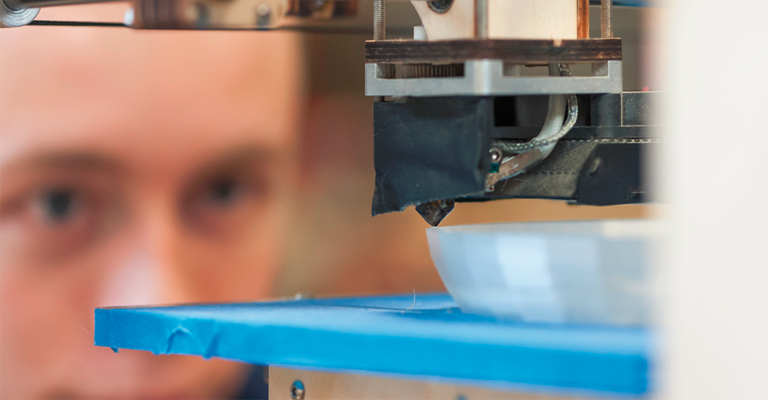
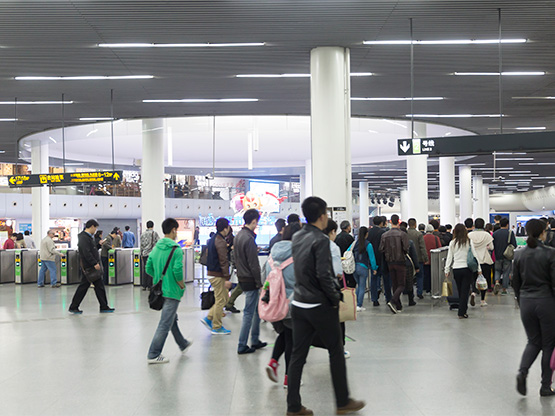
Augmented reality
Augmented reality (AR) involves overlaying information or visuals on the user’s view of the physical world. Delivered through connected devices, this “augmentation” of the real world has a wide range of potential uses in infrastructure projects, not least at the planning stage. For example, there’s clear scope for infrastructure strategies to anticipate how AR can improve a city’s congestion and safety, and help people navigate their way through transport hubs like railway stations and airports. AR also has the potential to boost efficiency during the execution of capital projects – such as by equipping workers to receive actionable context-specific information in real time via smartglasses, and accelerating and improving the speed and quality of information-sharing on the job.
Smart cities/grids
Smart technologies that combine digital connectivity with intelligent processing are already starting to revolutionise the way societies across the world design, create and use infrastructure. Smart cities and grids are taking a pivotal role in a vast array of infrastructure-related activities, ranging from managing carbon impacts to controlling devices and facilities in homes and business premises. Some of the biggest impacts are on energy infrastructure, with analysis by PwC’s Strategy& highlighting the profound effects on smart, digitally-enabled electricity networks from advances like distributed generation, rising use of renewables and breakthroughs in power storage. These impacts are now escalating worldwide: some 40% of capacity in Germany is from distributed generation, and 25% of global generating capacity will come from renewables by 2018. Hardly surprising then that 97% of the executives interviewed in PwC’s latest Global Power and Utilities Survey expect a medium or high amount of disruption in their home market by 2020.
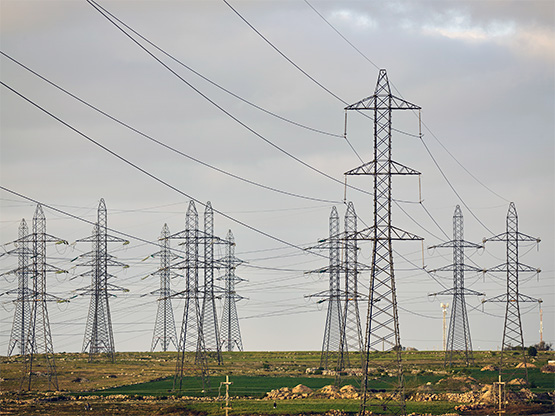

Autonomous vehicles
Autonomous cars have the potential to transform mobility, bringing huge implications for how we plan our cities and design infrastructure ranging from airports to roads. With shared-car services helping people get accustomed to buying mobility as-a-service, many autonomous vehicles will be dedicated to specific routes – witness the “parking pods” already in use at Heathrow Airport – while some will show up at people’s door to carry them on vacation, and others will be used by commuters to replace public mass-transit systems. Alongside greater convenience, driverless vehicles offer the twin benefits of freeing up people’s time and attention on the move, and being able to travel closer together, thus using roads more efficiently. In the coming years, as challenges like liability issues and unclear legal and regulatory frameworks are addressed, we expect global autonomous vehicle revenues to surge at a 33% CAGR to €39.6 billion in 2021 – with fully autonomous long-range driving at highway speeds arriving between 2020 and 2025. Importantly, mobility in cities will need have to be cross-modal, creating a need to integrate the infrastructure for autonomous cars with facilities for walking, cycling and public transport.
The Internet of Things (IoT)
The IoT is a fast-expanding network of digitally-connected objects — devices, vehicles and more — embedded with sensors and intelligent computing capabilities, while the Industrial IoT (IIoT) is a subset used in the manufacturing and industrial sectors. Closely linked with the rise of smart cities and grids, both the IoT and IIoT open the way to a future where a vast array of sensor data and analytics-driven intelligence is available seamlessly in real time, creating many impacts for the infrastructure sector. These range from the rapid build-out of high-speed national communications infrastructure systems to underpin the IoT, to the need for buildings and transport hubs to be designed from ground-up to exploit IoT connectivity, intelligence and insight. The IoT also presents major opportunities during infrastructure construction, including remote real-time monitoring and control of equipment through embedded sensors, faster and smarter business intelligence for decision-making, real-time tracking of the location and safety of employees and contractors, and delivering context-specific information to workers on-site through augmented reality.

http://www.pwc.com/gx/en/industries/capital-projects-infrastructure/publications/six-technologies-that-are-transforming-infrastructure.html



